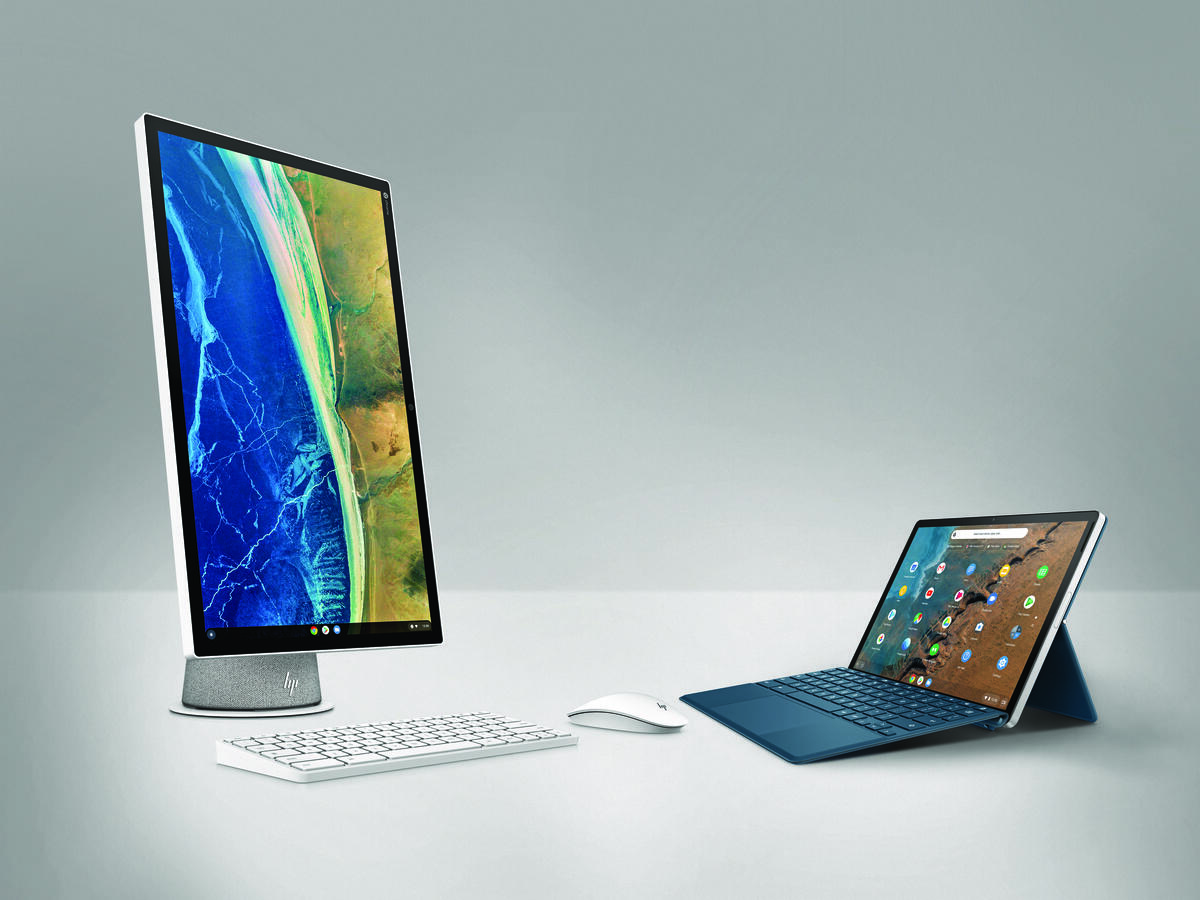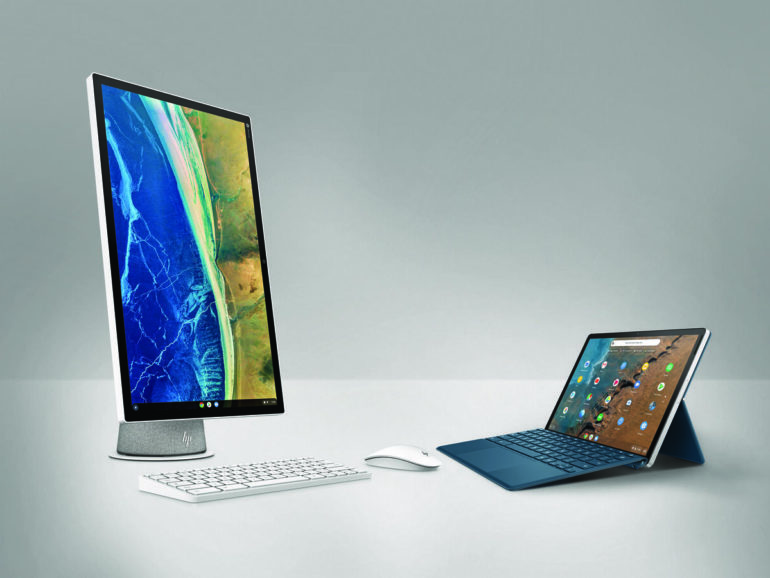Having landed in the right place at a tight time when millions of displaced students needed something that minimally offered a keyboard and webcam, Chrome OS has seen extraordinary growth in the past year. Google’s desktop OS, which powers many laptops so cheap they would make the clunky netbooks of yore look pricey, now accounts for about one in five PCs sold in the U.S. Its growth in market share has been mirrored by its growth in versatility as it now supports Android apps, progressive web apps, and both virtualized and cloud-hosted versions of Windows.
The progress stands in contrast to early attempts to bring Android to desktop environments (including HP’s circa-2013 SlateBooks). Nonetheless, as was the case for Android with phones, Chrome OS is struggling to break out of its pigeonholing as the go-to OS for sub-$300 bundles of hinged mediocrity. Google tried to shatter that perception itself with a progression of aspirational Chrome OS devices, including the MacBook-like Pixelbook, the Pixel C, and the Pixel Slate, before launching the more mainstream and less inspiring Pixelbook Go.
Now, though, after turning to partners to fill out the midrange and high-end of clamshells and 2-in1s, Google appears to be working closely with select partners on hero devices. This recalls the spirit, if not the co-branding, of the old Nexus program. After all, following the influx of Chrome OS into homes during the pandemic, PC companies can make a case for expanding the device family to Chrome OS customers. This week, HP jumped on that opportunity with two devices that push Chrome OS out of its wide-bezeled plastic comfort zone.
First up is HP’s Chromebook x2 11, a follow-up to its 2018 12.3″ Chromebook x2. A 2-in-1 tablet with both a bundled detachable keyboard and kickstand, the x2 11 is like a deluxe version of the breakout Lenovo Chromebook Duet, another product Google helped shepherd. The HP tablet swaps a Snapdragon 7c from Qualcomm — itself an example of Chrome OS’ widening ecosystem after a long flirtation — for the MediaTek device in the Duet. Compared to that device, the new x2 also offers a higher-resolution (2160×1440) display with a 3 X 2 aspect ratio (a Pixelbook hallmark before the Go), a fingerprint reader (particularly useful for devices used in multiple orientations), a second USB-C connector, and brings forward the company’s longstanding collaboration with Bang & Olufsen for tuned speakers.

In addition to including the kickstand and keyboard in the box, the device also includes a stylus that charges magnetically a la the Apple Pencil. It thus adds to the growing number of products supporting the stylus standard from the Universal Stylus Initiative supported by HP, Lenovo, Dell, Intel, Google and others. The x2 11 will also see the debut of a Google progressive web app the company plans to bring to other Chromebooks. Dubbed Capture, it represents a note-taking experience that hews a bit closer to the OneNote approach than Google Keep, which relies on a sticky note-like metaphor.
HP’s other foray is in the long-neglected Chromebase all-in-one category. Here, again, there’s precedent from Lenovo, which introduced the Windows-based Yoga AIO 7 before CES. Sporting a conical base versus Lenovo’s flat one, the plainly named HP Chromebase 21.5 inch All-in-One Desktop offers a smaller rotating display than the Lenovo’s 27″ offering. It also trades down Lenovo’s AMD Ryzen 7 processor and nVidia GPU for an Intel Pentium Gold with integrated graphics.
The Yoga also can act as a USB-C monitor for external devices although there are third-party Android apps like Duet (unrelated to the Lenovo 2-in-1) that allow Chrome OS devices to do the same if the host is a Windows PC or Mac. On the other hand, both products support HP QuckDrop, HP’s take on AirDrop-like instant sharing that, unlike Chrome OS’s native Nearby Share, works on Windows.
Coincidentally, both HP products are set to retail for $599. Unsurprisingly given their specs, that means the Chromebook x2 11 will be about twice the price of the Lenovo Chromebook Duet while the Chromebase 21.5 is $1,000 less than the price of the Yoga desktop, which has not launched in the U.S. in any case.
The x2 11 could be an attractive option for those who were drawn to the Duet but want a more upscale offering; it could also attract attention from those looking at the Surface Go. While it uses a mid-tier Snapdragon, it’s also significantly less expensive than many of the Windows 2-in-1s we’ve seen with Snapdragon processors. The Chromebase could work well as a shared PC, particularly for families with students still engaging in remote classes; it’s hundreds of dollars less than HP’s least expensive Windows all-in-one. Beyond the products’ individual prospects, though, both send the message that Chrome OS is ready to take on Windows in form factors beyond those of common laptops, capitalizing on the playbook of offering cheaper options than Windows-based competition from trusted brands to expand their appeal.
PREVIOUS AND RELATED CONTENT
Surface Go 2, IdeaPad Duet offer strong competition for baseline iPad
The new offerings leverage mature desktop operating systems to compete on flexibility and value.
HP Chromebook x2 review:
Gives Surface Pro, Pixel Slate, iPad Pro a run for their money
This Lenovo Yoga desktop screen rotates for vertical viewing: CES 2021 sneak peek
Ahead of CES 2021, Lenovo unveiled the rotating Yoga AIO 7 along with a mini two-in-one PC concept that turns into a handheld gaming device.
